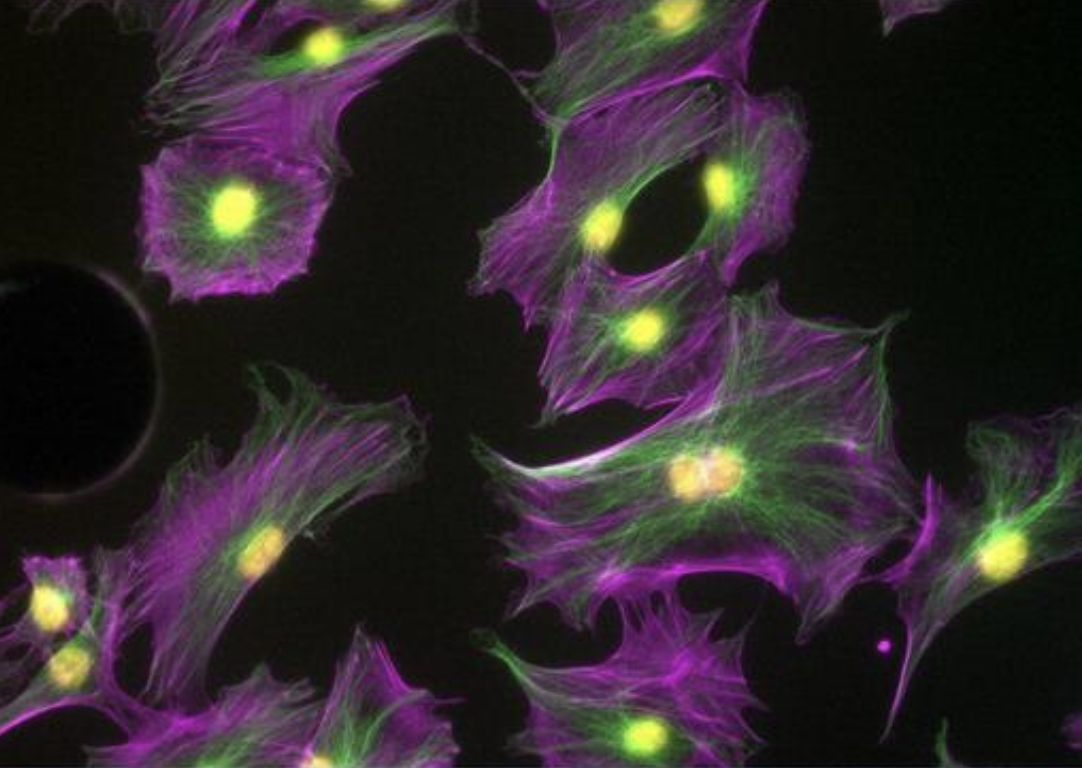Pharmaceutical Treatments for Osteoporosis

There are a variety of prescription drugs, both oral and intravenous treatment regimens, approved for the treatment of osteoporosis. Essentially, these pharmaceuticals either promote bone formation or inhibit bone resorption.
Mini-glossary
Osteoblasts are part of the bone building process.
Osteoclasts are part of the bone resorption or breakdown process.
Osteopenia is low bone mass or low bone mineral density and is a precursor to the development of osteoporosis.
Osteoporosis is when bone mass has deteriorated to such an extent that bones have lost so much of their mineral density and structural integrity that a person is at serious risk of incurring fragility or traumatic fractures.
Fragility fractures are fractures that occur in situations that would not normally hurt healthy bone, for example, bumping an arm against a countertop or sustaining a fall from standing height. In osteoporosis vertebral fractures can occur simply from the weight of vertebrae pressing down on each other, as well as from falls or accidents. I once knew of a woman who sustained vertebral fractures from riding in a motorboat that was bouncing on waves in the ocean.
Antiresorptives: Avoiding bone loss

Antiresorptives, those medicines that inhibit the destruction and resorption of bone, tend to work by inhibiting and/or destroying osteoclasts, the cells whose job it is to break down and clear away old bone. These include:
· Bisphosphonates
o Alendronate
o Risendronate
o Ibandronate
o Zoledronic Acid
· Denosumab
· Estrogen
· Raloxifene
· Calcitonin
You may have heard of bisphosphonates because they are typically considered the first line of therapy for post-menopausal women at high risk of fracture (Pavone et al., p.3; Walker & Shane, p.1983). Sometimes they are recommended by medical professionals when a person has been diagnosed with osteopenia in the hope that they will prevent further bone loss. They are most often taken orally, but because gastrointestinal problems can arise from ingesting these drugs some of them can be administered intravenously.
Bisphosphonates work by inhibiting osteoclast differentiation or recruitment, interfering with osteoclast structure and their ability to attach to bone, and triggering “metabolic injury” in mature osteoclasts that results in cellular toxicity (Pavone et al., p.3). What struck me when I read this is that “cellular toxicity” seems likely to contribute to overall inflammation in the body, potentially contributing to systemic inflammation and affecting other body systems and overall well-being.
However, all the bisphosphonates reduce the risk of vertebral fracture and all but ibandronate reduce the risk of hip and other fractures. They can also help to reduce the risk of death after hip fracture if administered within ninety days and continued for at least three years (Walker & Shane, p.1983).
The most common side effects of bisphosphonates include GI irritation ranging from mild to severe, and body aches. Rare, but serious, side effects are atrial fibrillation and renal failure, atypical femur fractures, and osteonecrosis (the death of bone tissue) in the jaw. One study of zoledronic acid in men reported a statistically significant increase in incidence of heart attack; two other randomized controlled trials (RCTs) did not find this risk to be statistically significant (USPSTF, p.E8).
Denosumab is a fully human monoclonal antibody that binds to a protein, RANKL, involved in the stimulation of osteoclasts, thereby inhibiting osteoclast formation and activation. In randomized controlled trials (RCTs) it has been shown to reduce overall fracture risk. It’s not clear that denosumab confers greater fracture protection than bisphosphonates, but it does stimulate greater gains in bone mineral density (Walker & Shane, p.1983).
Denosumab is typically administered subcutaneously (under the skin, not by IV) every six months and suppresses bone resorption by 80-90%. However, the positive effects of the drug don’t appear until about one month after the initiation of therapy and the anti-resorptive effects only last 4-6 months, which is why treatment must be ongoing (Pavone et al., p.3).
It is critical that follow-up treatments with denosumab be given on time because data shows that receiving the drug late is associated with “an incidence in vertebral fractures that was nearly four times as high as that seen among patients who received denosumab doses on time” (Walker & Shane, p.1988). Denosumab is not recommended as an osteoporosis preventive, so it is not a good proactive treatment for someone with osteopenia.
Because denosumab works by interacting with RANKL, and RANKL is a protein involved in immune system functioning, the most significant side effect of denosumab is the potential for an uptick in infections. In particular, those with kidney transplant or vulnerability may be more prone to UTIs (Pavone et al., p.3).
A second, possibly more serious side effect, is that “there is concern about accelerated bone resorption and rapid bone loss after discontinuation of denosumab therapy” (Walker & Shane, p.1988). The recommendation therefore is either to take denosumab indefinitely or begin administering a bisphosphonate six months after receiving the last dose of denosumab in order to prevent rapid bone loss and accelerating fracture risk. One would then need to keep an eye on bone-turnover markers to assess continuing bone loss and may need to maintain bisphosphonate therapy long-term.
Estrogen, our dominant female hormone, protects against bone loss. Clearly, the decline and loss of estrogen during peri- and postmenopause is why we lose bone density so precipitously as we age, and why our risks of fracture and osteoporosis skyrocket.
Dr. Jen Gunter writes that conjugated equine (horse) estrogens plus progestin “reduced the risk of fractures of the hip and spine by 34 percent” (Gunter, p.145). This information comes from the much debated and partially discredited Women’s Health Initiative (WHI) trial of the 1990s. This trial also found that hormone supplementation put women at greater risk of cardiovascular (CV) disease, breast cancer, and blood clots leading to the risk of stroke and embolism. What was not accounted for or revealed in the initial findings of the WHI is that the majority of the participants in the study in whom these issues arose already had CV disease and/or they were already postmenopausal by years or decades, meaning their risk of cancer or CV events were naturally increased by the confounding factor of age.
Additionally, the hormones used in the study were either synthetic or derived from mare’s urine. These days, equine estrogens and progestins (a synthetic form of progesterone) are no longer recommended. Now, bioidentical or “natural” hormones derived from plants (wild yam or soy) are used to create estrogen and progesterone that are like our human hormones.
There are volumes to say about hormone replacement therapy (HRT), also called menopause hormone therapy (MHT), and I plan to devote some blog space to it soon.
For the moment I will just say that supplemental estrogen is protective against bone loss, osteoporosis, and fracture risk. I will also say that most healthcare professionals still do not understand that the much publicized, prematurely announced conclusions of the WHI have been undermined. Because of this, and the general lack of education and awareness about menopause in medicine, professionals are unlikely to offer estrogen as an option for osteoporosis prevention and treatment. If they do offer it, they may not be up to date regarding the true risks of HRT and how they might apply to an individual’s particular history and genetics.
Raloxifene, a selective estrogen receptor modulator (SERM), acts like an estrogen on some tissues in the body, but not on others. For example, it has been shown to reduce spine fractures, but not hip fractures. It is not the most powerful drug for fracture prevention, but it can reduce the risk of breast cancer so it may be used in women with osteoporosis who have an increased risk of breast cancer. Side effects include increased hot flashes or risk of blood clots (Gunter, p.145).
Calcitonin is currently available as an, oral, injectable, or intranasal treatment. While it does inhibit bone resorption and has been shown to increased lumbar spine bone mineral density, there is no evidence that it reduces fracture risk (Pavone et al., p.4). It is considered a weak form of treatment and is rarely used in postmenopausal women (Walker & Shane, p.1989).
Anabolic Agents: Promoting bone growth

There are fewer drugs that promote bone growth than inhibit bone resorption and treatment regimens using them are generally time-limited. This makes sense because one of the risks of stimulating cellular replication is, of course, stopping or not overdoing cellular growth.
Anabolic agents include:
· PTH (parathyroid hormone) receptor agonists
o Teriparatide
o Abaloparatide
· Romosozumab
Parathyroid hormone triggers bone cells to release calcium into the blood. This makes calcium available to the body but also promotes bone deterioration and loss. Teriparatide has been shown to “directly stimulat[e] bone formation on active remodeling sites and on previously inactive bone surfaces…initiating new remodeling sites” (Pavone et al., p.5). Both teriparatide and abaloparatide reduce vertebral and non-vertebral fracture risk, and limited data suggests that teriparatide might support patients at very high fracture risk of vertebral fracture better than bisphosphonates. Neither has reduced the incidence of hip fracture in studies, although some evidence suggests an increase in bone mineral density in the hip with abaloparatide (Walker & Shane, p.1988). Both drugs require daily injections.
One possible serious side effect of the PTH receptor agonists has to do with the potential for too much bone growth. Rodent studies found an increased incidence of osteosarcoma (bone cancer of the osteoblasts) after treatment with teriparatide. Recent data on humans shows that the incidence of osteosarcoma in people being treated with teriparatide is similar to the incidence one would expect to find in the general population (Walker & Shane, p.1988). However, current recommendations are that treatment should be limited to no more than 24 months (Pavone et al., p.4).
Another issue with treatment with PTH receptor agonists is similar to the problem with denosumab. Walker & Shane (2023) write, “Antiresorptive therapy is indicated after PTH receptor agonist therapy is complete and increases bone mineral density further; without it, bone mineral density decreases within a year” (p.1988). In other words, after a round of PTH treatment it is recommended that people start on denosumab or bisphosphonates in order to maintain the gains made by PTH therapy.
It's difficult to avoid the impression that once one starts on a given osteoporosis treatment, one will have to continue with osteoporosis treatments indefinitely in a see-saw attempt to offset bone creation with bone resorption or vice versa.
Romosozumab is a monoclonal antibody that inhibits sclerostin, a protein that blocks bone formation. By blocking the action of sclerostin, romosozumab allows bone formation to increase. Most guidelines recommend limiting its use to those with very high fracture risk and for one year only.
Studies have found that romosozumab does reduce the risk of vertebral and non-vertebral fractues in women compared with placebo. And, when used in combination with alendronate, romosozumab decreases vertebral, non-vertebral, and hip fractures more than alendronate alone.
General side effects include musculoskeletal aches, headache, and hypocalcemia (low calcium). Serious cardiovascular (CV) events have been seen with romosozumab use. Its use is contraindicated within one year after heart attack or stroke.
Other
There is an anti-resorptive that has been approved in Europe for the treatment of severe osteoporosis in men and postmenopausal women: strontium ranelate. It works by inhibiting osteoclast function and promoting osteoblast differentiation and proliferation (Pavone et al., p.5).
Strontium ranelate is typically used only in patients who cannot tolerate other pharmacologic treatments for osteoporosis. It can have severe side effects including CV events such as venous thromboembolism and heart attack; GI discomfort; signs and symptoms of nervous system disorders like headache, seizure, and memory loss; and allergic reactions, for example, drug rash or systemic symptoms of inflammation (Pavone et al., p.5). Its use has not been approved in the U.S.

I hope this post is helpful. I know it’s a tremendous amount of information and it’s difficult to keep all the different drugs straight because there is a lot of overlap in how they work and what they do for better or for worse. I have tried to winnow out the bullet points of pharmacologic treatment for osteoporosis while attempting to present the pros and cons fairly.
The Bone Health & Osteoporosis Foundation has a webpage that lists the drugs available for osteoporosis as well as links to pages that describe how each drug is used and administered:

The Walker & Shane (2023) article from the New England Journal of Medicine (listed below) also has a table listing each drug, its mechanism of action, how it is dosed, and its adverse effects and contraindications.
I did not conduct a cost comparison of the drugs, try to discover which among them are routinely covered by insurance, or investigate how easy it is to get a prescription for individual treatments. It is likely that these things vary widely by insurance company, health care professional, socioeconomic status, race, and zip code.
If all else were equal, it seems to me that the primary benefit of pharmaceutical treatments for osteoporosis is that they do either promote bone formation or reduce bone resorption, thereby increasing bone mineral density and structural integrity and decreasing fracture risk. Essentially, they halt the process of osteoporosis.
The primary disadvantage of these treatments is that at this point it appears that one needs to take them constantly or intermittently over the remainder of one’s life for healthy bone conservation and to maintain reduced risk of fractures. Also, because bone maintenance is a balancing act between bone loss and bone creation, a person is likely to have to take multiple different types of drugs to stave off osteoporosis.
The costs of this may add up financially, in terms of side effects endured, and in time spent on medical appointments. Additionally, an individual may simply not be able to access these treatments consistently over the long-term for a variety of reasons.
As with any other treatment for any other illness, the decision to take osteoporosis medications should be made on an individual basis, hopefully in concert with an educated and interested healthcare professional. My intention in offering this post is to provide an overview of current pharmaceutical offerings in the U.S. so that you can start to consider what might be beneficial for you. The articles listed in the resources may also be helpful to you if you would like more detailed information, tables, or pointers to other research.
In the next post I’ll look at lifestyle shifts—nutrition, supplementation, exercise—that can be helpful in preventing and treating osteoporosis.
Resources
Gunter, Jen. The Menopause Manifesto.
Pavone, V., Testa, G., Giardina, S.M.C., Vescio, A., Restivo, D.A., & Sessa, G. (2017, November). Pharmacological therapy of osteoporosis: A systematic current review of literature. Frontiers in Pharmacology, 8(803), 1-7. doi: 10.3389/fphar.2017.00803
US Preventive Services Task Force (USPSTF). Screening for Osteoporosis to Prevent Fractures: US Preventive Services Task Force Recommendation Statement. JAMA. 2025;333(6):498–508. doi:10.1001/jama.2024.27154
Walker, M.D., & Shane, E.S. (2023). Postmenopausal Osteoporosis. New England Journal of Medicine, 389: 1979-1991. DOI: 10.1056/NEJMcp23073 (If you look for this article in scholar.google.com, and click on the link to the right of citation: “[PDF] wordpress.com,” you will be able to download a copy of the article.)
Images
Osteoclasts: https://www.gettyimages.com/photos/osteoclast?servicecontext=srp-related
Osteoblasts: https://www.cellimagelibrary.org/images/39060
